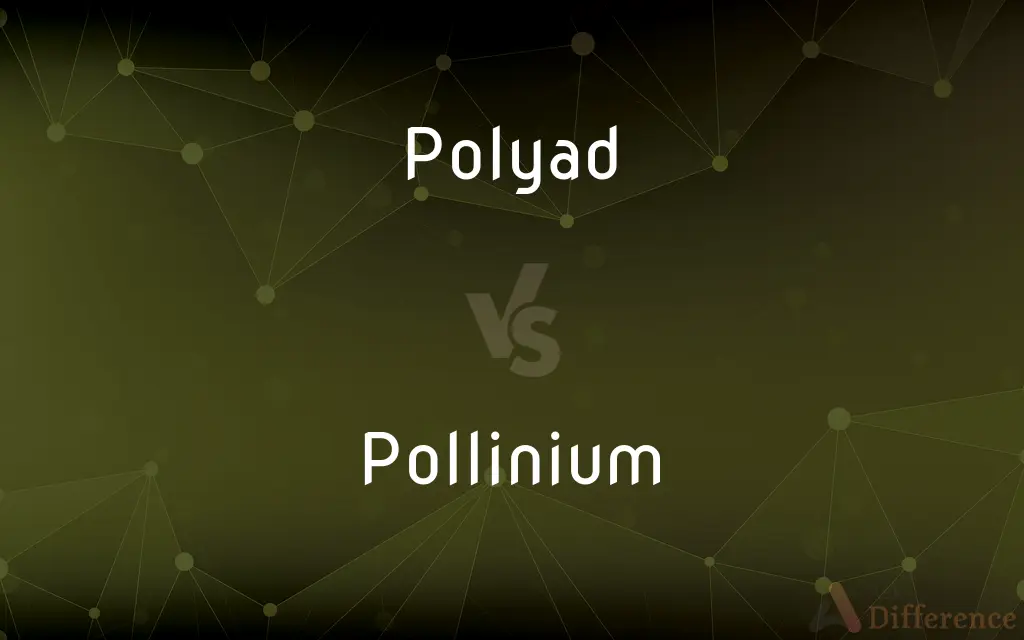Polyad vs. Pollinium — What's the Difference?

Difference Between Polyad and Pollinium
ADVERTISEMENT
Compare with Definitions
Polyad
In mathematics, polyad is a concept of category theory introduced by Jean Bénabou in generalising monads. A polyad in a bicategory D is a bicategory morphism Φ from a locally punctual bicategory C to D, Φ : C → D. (A bicategory C is called locally punctual if all hom-categories C(X,Y) consist of one object and one morphism only.) Monads are polyads Φ : C → D where C has only one object.
Pollinium
A pollinium (plural pollinia) is a coherent mass of pollen grains in a plant that are the product of only one anther, but are transferred, during pollination, as a single unit. This is regularly seen in plants such as orchids and many species of milkweeds (Asclepiadoideae).
Polyad
A group consisting of an indeterminate number of items.
Pollinium
A coherent mass of pollen grains typically transferred as a unit during pollination, found in the flowers of certain plants such as orchids and milkweeds.
Polyad
(chemistry) An element whose valence is greater than two.
ADVERTISEMENT
Pollinium
(palynology) A coherent mass of pollen, as in the milkweed and most orchids, which is dispersed as a single unit during pollination.
Pollinium
A coherent mass of pollen, as in the milkweed and most orchids.
Pollinium
A coherent mass of pollen grains (as in orchids)
Share Your Discovery

Previous Comparison
Anachronistic vs. Archaic
Next Comparison
Creation vs. Production













































